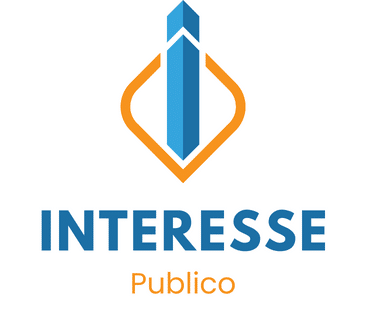How to Create an Effective Email Marketing Campaign for a UK-Based B2B Service Provider?

In the fast-paced world of digital marketing, one constant remains: email. Email marketing continues to be a vital tool in promoting your business, reaching out to potential customers and nurturing relationships with existing ones. But if you’re a UK-based B2B service provider, how do you create an effective email marketing campaign? Let’s delve into the key steps and strategies that will help you captivate your audience, generate leads, and drive your business forward.
Understanding your Audience
Before you start crafting your email content, you need to know who you’re speaking to. Understanding your audience is critical to the success of your email marketing campaigns. By segmenting your audience, you can create targeted messages that resonate with specific groups, increasing engagement and conversion rates.
Topic to read : How to Optimize E-commerce Logistics for Faster Delivery in the UK?
Start by gathering data on your existing customers. Look at their industry, size of business, role within their organization, and their specific needs or pain points. Also consider their interaction with your previous emails, website, and other marketing campaigns. This will give you a clear picture of who your customers are and what they are interested in.
You should also build a subscriber list of potential customers. There are various ways to do this, such as offering valuable content in exchange for an email address, or participating in industry events and trade shows. Keep in mind the requirements of GDPR, especially if you’re based in the UK, when collecting and using customer data.
Have you seen this : How Can UK Legal Firms Use AI for More Efficient Document Analysis?
Crafting your Message
Once you have a well-defined audience, it’s time to create your email content. The best email marketing campaigns deliver clear, relevant, and engaging content that provides value to the reader. This could include industry insights, tips and advice, or news about your products or services.
Begin with a compelling subject line. It’s the first thing your audience will see, and it can make or break whether your email is opened. Make it concise, engaging, and relevant to the content of the email.
The body of your email should be equally engaging. Keep it clear and concise, and break up text with subheadings, bullet points, and images to make it easy to read. Include a clear call to action, guiding your audience on what step they should take next.
Remember to personalize your emails. This doesn’t just mean using the customer’s name in the greeting, but tailoring the content to their needs and interests. Personalization can significantly increase engagement and conversion rates.
Choosing the Right Time to Send your Emails
Timing is crucial in email marketing. You want your emails to land in your audience’s inbox at a time when they’re most likely to be checking their emails. This can vary depending on your audience and their habits.
For B2B customers, weekdays during working hours are generally the best time to send emails. But this can vary, so it’s good to test different times and see when you get the highest open and click-through rates.
Remember to consider time zones, especially if you’re a UK-based business with international customers. You might need to schedule your emails to be sent at different times to different segments of your audience.
Testing and Optimizing your Campaigns
An effective email marketing campaign is not set in stone. It requires ongoing testing and optimization to ensure it continues to deliver results.
Testing can take many forms, from A/B testing your subject lines to see which gets more opens, to analyzing the click-through rates of your call to action. Use this data to constantly refine and improve your campaigns.
Consider automating your email marketing. Many email marketing platforms offer automation features, which can save you time and help you deliver timely and relevant emails to your audience.
Building Relationships with your Customers
Email marketing is not just about selling your products or services; it’s also about building relationships with your customers. This means providing value beyond just what you sell, and showing that you understand and care about their needs.
One way to build relationships is through regular newsletters that provide valuable content. This can help you establish your business as a trusted expert in your field, and keep you top of mind with your customers.
Also consider asking for feedback and reviews. This not only provides you with valuable insights into your customers’ needs and experiences, but also shows that you value their opinion.
Lastly, remember to always respond promptly and professionally to any queries or complaints. This can help you resolve issues quickly and maintain good relationships with your customers.
In conclusion, email marketing is a powerful tool for any B2B service provider. By understanding your audience, crafting your message, choosing the right time to send your emails, testing and optimizing your campaigns, and building relationships with your customers, you can create an effective email marketing campaign that drives your business forward.
Analyzing the Results and Adjusting Strategy
For any email marketing campaign, it is vital to continually track and measure the performance of your campaigns. This provides invaluable insights that can be used to adjust and improve your strategy.
Invest in an email marketing platform that provides analytics and tracking capabilities. You need to be able to measure key metrics such as open rates, click-through rates, conversion rates, and bounce rates. These stats will help you understand how your emails are performing, and identify areas for improvement.
For example, if your open rates are low, it could imply that your subject lines are not compelling enough, or you’re not sending your emails at the right time. If your click-through rates are low, perhaps your email content is not engaging, or your call to action is not clear or compelling enough.
Heat map analysis is another useful tool. It shows you where people are clicking within your email. This can help you understand what type of content is attracting your audience’s attention and adjust your email design and content accordingly.
Additionally, regularly survey your customers to gather their feedback about your emails. This can provide valuable insights into what they like or don’t like, and what type of content they find valuable. A simple questionnaire or poll can be included in your emails, or sent separately.
Finally, keep an eye on your unsubscribe rate. If it’s increasing, it’s a clear sign that your audience is not finding your emails valuable and you need to re-evaluate your strategy.
Staying Ahead of Email Marketing Trends
In the rapidly evolving world of digital marketing, it is important to stay ahead of the curve and adapt your email marketing strategy accordingly. Here are some trends to watch out for:
Mobile optimization: More people are now checking their emails on their mobile devices, so ensure your emails are optimized for mobile.
Automation: Automated email campaigns can save time and ensure your emails are sent at the right time. Examples of automated emails include welcome emails, abandoned cart emails, and re-engagement emails.
Artificial Intelligence (AI): AI can help you personalize your emails at scale, predict the best time to send emails, and automate your campaigns.
Interactive content: Interactive content such as surveys, quizzes, and interactive images can increase engagement and click-through rates.
By staying abreast of the latest email marketing trends and continuously refining your strategy based on analytics and customer feedback, you can ensure your email marketing campaigns continue to generate leads and drive your business forward.
Conclusion
In today’s digital age, email marketing remains one of the most effective ways for UK-based B2B service providers to reach out to potential customers, nurture relationships with existing ones, and drive business growth. However, creating an effective email marketing campaign involves more than just sending out emails. It requires a deep understanding of your audience, crafting engaging and personalized messages, choosing the right time to send your emails, continually testing and optimizing your campaigns, building relationships with your customers, analyzing the results, adjusting your strategy, and staying ahead of email marketing trends. By implementing these strategies, you can create email campaigns that not only captivate your audience but also deliver tangible results for your business. It’s time to leverage the power of email marketing and propel your business to new heights.
